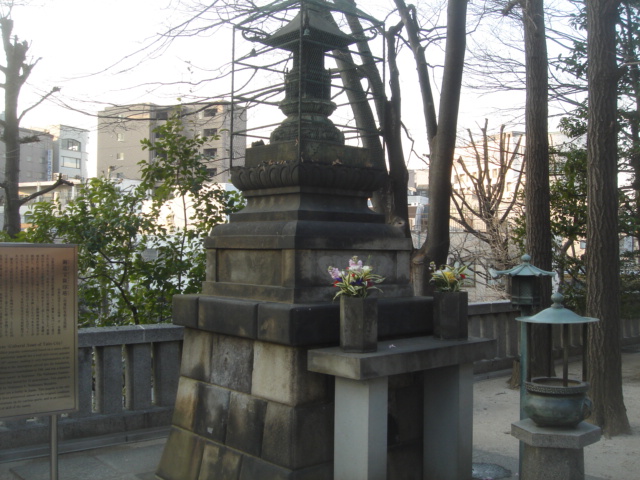
所在地 台東区浅草7-4-1 (待乳山聖天)
銅造宝篋印塔(台東区有形文化財)
宝篋印塔は「宝篋印陀羅尼経」という経典に基づいて造立された塔である。本塔は江戸時代中期以降に流行した、屋根型の笠をもつ宝篋印塔で、時代性をよく表している。基礎に刻まれた銘文から、天明元年(1781)に鋳物師西村和泉守が製作し、蔵前の札差等16名が奉納したものであることが分かる。西村和泉守は、江戸時代から大正時代にかけて、十一代にわたり鋳物師を務めた家で、本塔の作者は五代西村政平にあたると考えられる。
銅造の宝篋印塔は全国的にも類例が少なく、特に区内では造立当初からほぼ完全な形で遺された唯一の事例である。各部の装飾は優れており、鋳物師の高い技能を知ることができる。また、蔵前の札差の奉納物としても貴重な歴史資料である。
平成14年(2002)に台東区有形文化財として台東区区民文化財台帳に登載された。
平成19年(2007)3月 台東区教育委員会
Bronze Hokyoin-to (Cultural Asser of Taito City)
Hokyoin-to refer to Buddhist pagodas constructed based on a sutra called Hokyoindarani-kyo.This particular pagoda has a roof style cover,popular after the latter half of the 18th century,making it very representative of the age it was built in.According to the inscription carved into the foundation,it was built by the caster Nishimura Izuminokami in 1781,and was a donation by 16 fudasashi(rice brokers/users)in Kuramae.The Nishimura Izumino-kami was a family of casters that lasted for 11 generations. This pagoda is thought to have been built by Nishimura V,Nishimura Masahira.
Hokyoin-to made of btonze are a rarity in Japan.This pagoda is the only one in Taito city that has been preserved almost in its original condetion.It is marked by fine decorations on its various parts,and is an excellent example of the high level of skill of the caster.
PR






